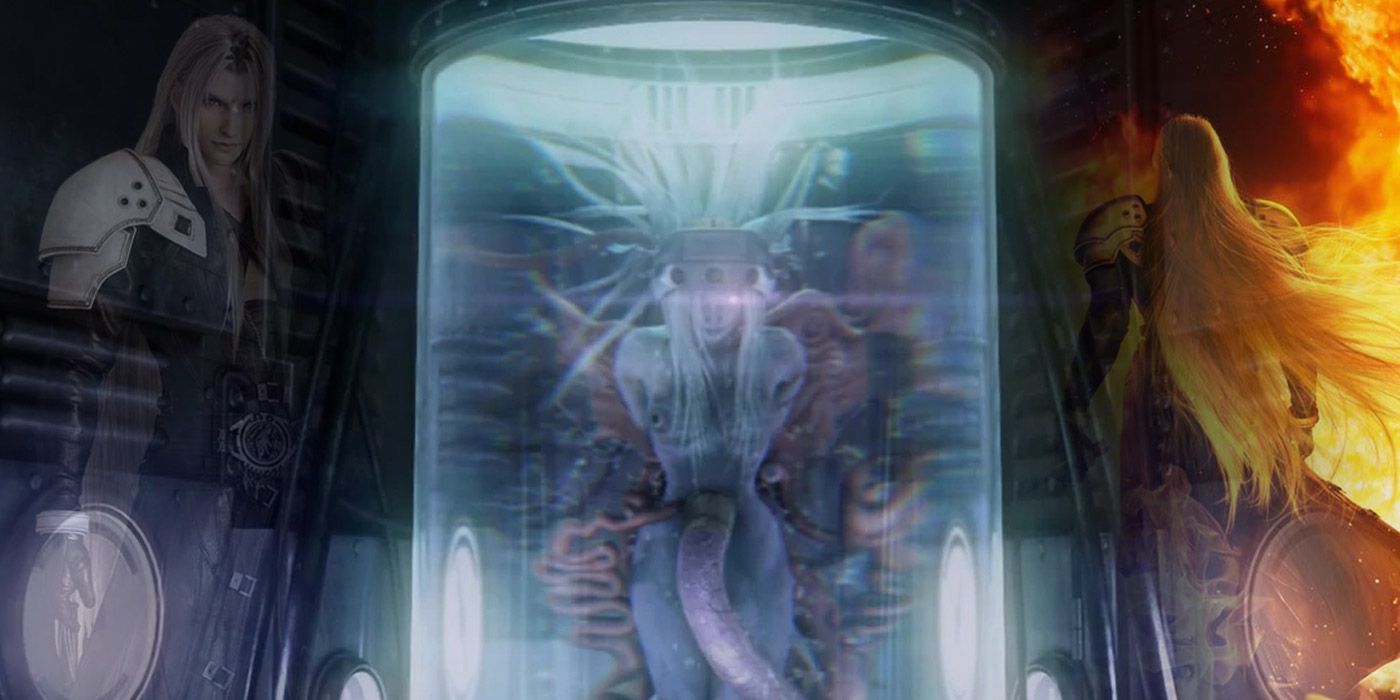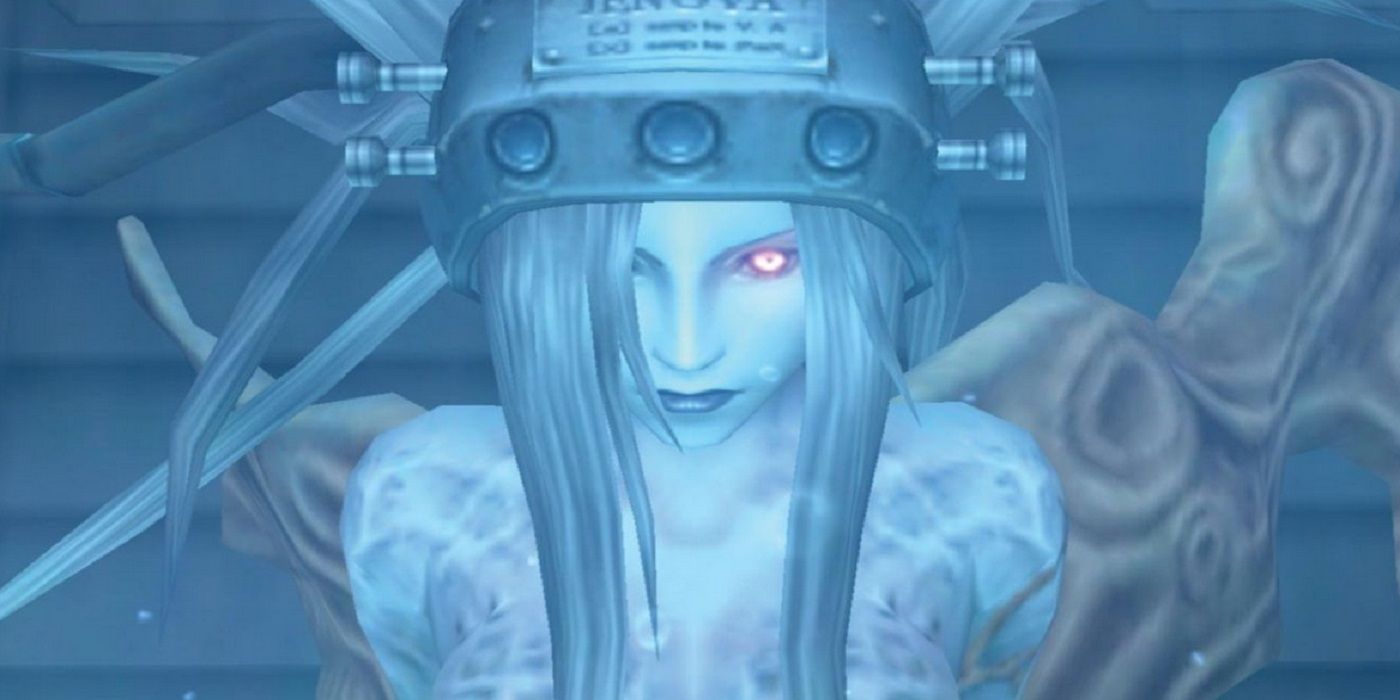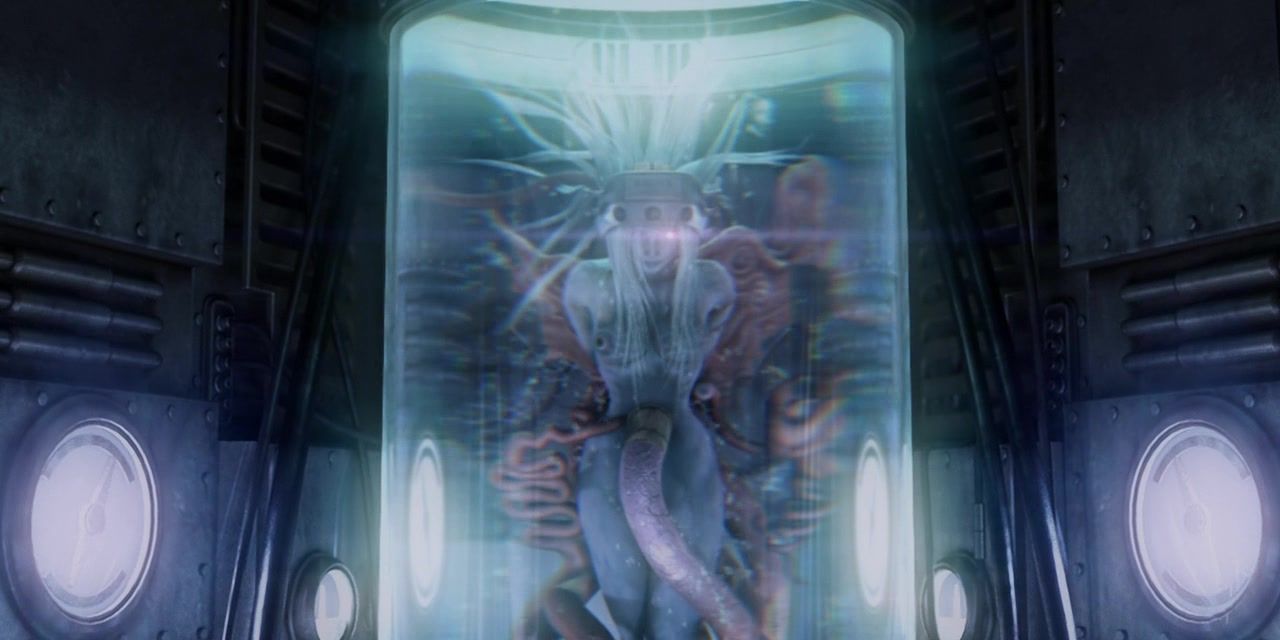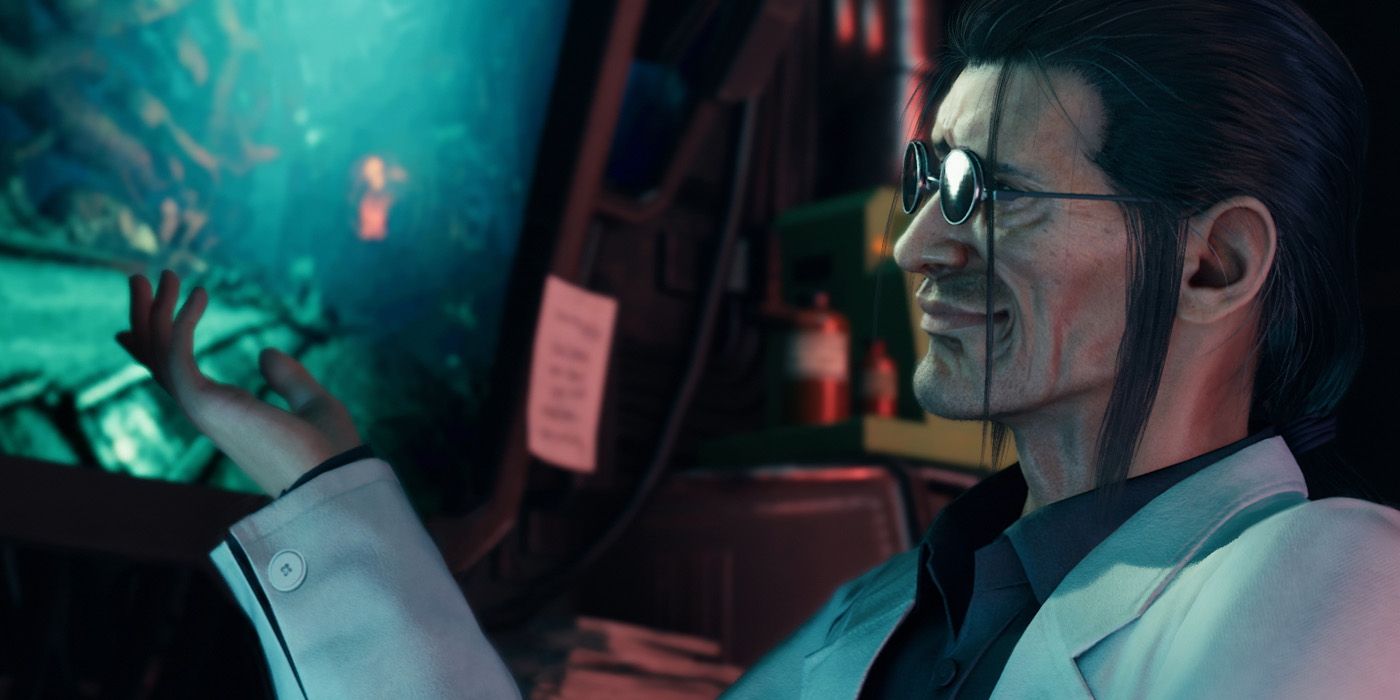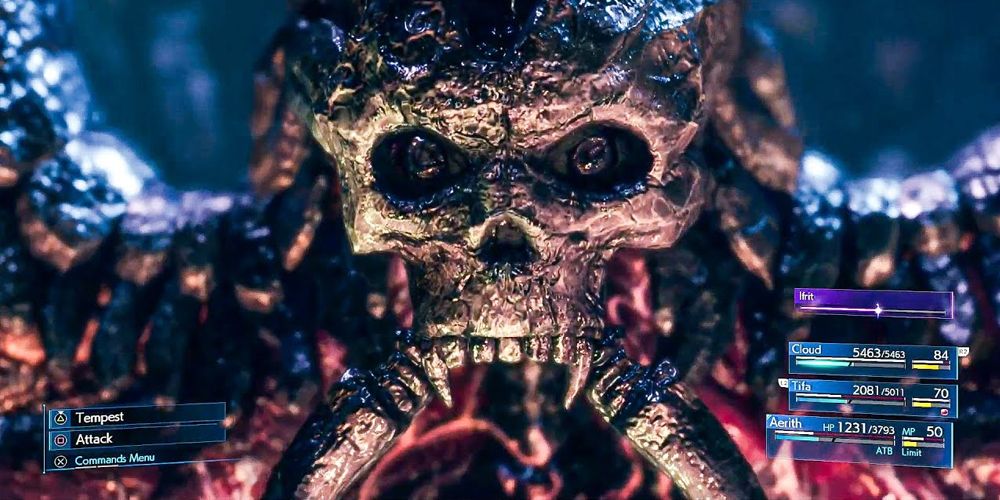The striking narrative of Final Fantasy 7 is one of the most memorable things about the RPG, but because of the complex lore and history, it's difficult to remember all the little details. That's especially true of Jenova, a major antagonistic presence in Final Fantasy 7 and the party responsible for virtually the entire story. Despite its importance, the lore surrounding Jenova is complex and wasn't explained very clearly in the original game.
Jenova's crucial role is easy to gloss over; it takes many different forms throughout the story so it can be hard to keep track of what is Jenova and what is not. While Jenova is generally described as a character in the Final Fantasy 7 universe, it's not even a character in the traditional sense. Jenova has no character arc, no lines apart from when it's being used by Sephiroth, and no drive except to destroy everything. It's a truly mysterious and unnerving being that's always in the backdrop of Final Fantasy 7.
Jenova and the Cetra
Thousands of years before the main story of Final Fantasy 7 begins, Jenova crash-landed on the planet and waged war against the Cetra, more commonly referred to as Ancients. The Cetra are known for their deep connection to the planet and they fought valiantly against Jenova, but unfortunately for them, the "calamity from the skies" had a couple of tricks up its sleeve and had supposedly been in the business of destroying planets for eons.
Jenova is uniquely capable of injecting its own DNA into other hosts, which then mutate into violent monsters. The entire point of Jenova's existence is also to destroy planets, and while its origin is unknown, it seems like the alien goes from planet to planet and simply destroys everything it finds.
It nearly wiped out the planet and the Cetra entirely, but somehow, the remaining Ancients (with the help of Shiva) managed to capture Jenova and hide it in the North Crater, which formed upon its explosive arrival. While the Cetra were essentially wiped out apart from a few lingering survivors, Jenova was contained for a few thousand years. In place of the Cetra, humans began to take over the planet.
The Jenova Project
Many years after Jenova's war with the Cetra, Shinra became a dominant force by utilizing mako energy from the planet as fuel. At that point, the Cetra were essentially reduced to legends. However, after discovering that the Cetra believed in a "promised land" with unlimited access to mako, Shinra began tearing the planet apart in search of it. Enter: Jenova.
The dormant Jenova was discovered by Professor Gast and Professor Hojo when the North Crater was excavated. Not having much else to go on, they decided that Jenova must be one of the Cetra. In an effort to create a Cetra/human hybrid, the Jenova Project was born. Professor Hojo and Professor Hollander headed up Projects S and G, respectively, in order to see who could successfully create a hybrid.
Professor Hojo's experiments resulted in Sephiroth, while Hollander's produced Genesis and Angeal. For some unknown reason, many Jenova hybrids have a single wing, inspiring Sephiroth's theme song, "One-Winged Angel."
Eventually, Project S led to the development of SOLDIER, a program where young men were injected with Jenova cells and saturated in mako energy. For the most part, SOLDIER specimens were strong, dependable, and stable. At the same time, Hollander's Project G became Deepground, which created less sophisticated hybrids through cruel experimentation.
How Hojo's Jenova Experiments Created Sephiroth
There are some fans who believe that Hojo is the true villain of Final Fantasy 7, and it's not hard to see why. He's a textbook mad scientist. Hojo is responsible for using Jenova's cells to create Sephiroth, but his Jenova experimentation didn't stop there. Ultimately, he's also responsible for the creation of countless other monstrosities. He also lied to Sephiroth about his true parentage, telling him that Jenova was his mother.
His obsessive research about the Jenova Project combined with the influence of Jenova itself is what drove Sephiroth to madness, and that's all Hojo's fault. Without Jenova, Sephiroth never would have become the iconic villain he is. Jenova helped Sephiroth merge with the Lifestream of the planet, and as a result, he believes that the planet is his birthright and he needs to finish what Jenova started. The details of Sephiroth and Jenova's relationship are a little fuzzy, largely due to the original game's poor translation.
Hojo created Sephiroth by injecting Jenova cells into him when he was still a fetus. Sephiroth's true mother was Lucrecia Crescent, an Ancient, though Hojo always hid that truth from him. Sephiroth refers to Jenova as his mother several times and doesn't appear to have any connection to Lucrecia. Sephiroth was by far the most successful Jenova hybrid and Hojo was never able to replicate that success, but without his experimentation with Jenova cells, the story would look very different.
Jenova has been all over the map of Midgar, from the North Crater to Nibelheim during Hollander and Hojo's experiments, to the Shinra headquarters. Its cells are dispersed in people throughout the planet, and Sephiroth went so far as to take Jenova's head while leaving the main body behind, so the alien has really been put through the wringer.
According to Hojo's Reunion Theory, however, all of Jenova's cells and body parts seek to be reunited with one another, including the ones in Cloud and Sephiroth. That has some interesting implications for the story and creates a unique bond between all of the specimens injected with Jenova cells.
Jenova Has Many Forms
When players think about Jenova, they probably think about the humanoid creature trapped in a glass cylinder and surrounded by something resembling external organs. That image of Jenova is by far the most unsettling and the most mysterious because it doesn't do anything; this image of Jenova is always stationary.
But, that's not Jenova's only form. Jenova is a shapeshifter, which is one of its most critical abilities. Most of the time when Sephiroth is seen in the game, it's actually Jenova being controlled by Sephiroth. The player encounters Jenova in several forms throughout the game, including Jenova-BIRTH, Jenova-DEATH, Jenova-SYNTHESIS, and the Jenova Dreamweaver boss featured in Final Fantasy 7 Remake. The knowledge that Sephiroth is actually Jenova for most of the story is strange because so little is known about Jenova's true nature and how it all works. It's also strange to think about fighting the same creature multiple times, albeit in very different forms, but that's part of what makes Jenova the backbone of Final Fantasy 7.
It takes a little bit of research to fully understand what Jenova is and where it came from, and there are a lot of questions that remain unanswered regarding the malevolent entity. Many of those questions probably will never be answered, and that's why Jenova is so intriguing. It's creepy, weird, imaginative, and plays a fascinating role in the story. Everything about Final Fantasy 7 rides on a character that never acts independently during the game, but players know what the real Jenova is capable of, and that makes every encounter a memorable one.
Final Fantasy 7 Remake is available now on PS4.

